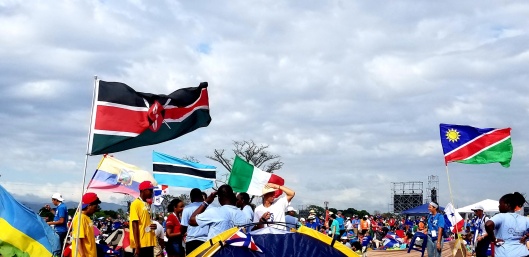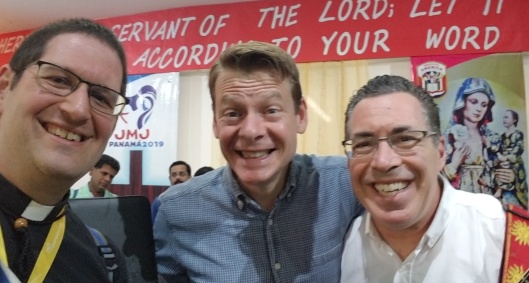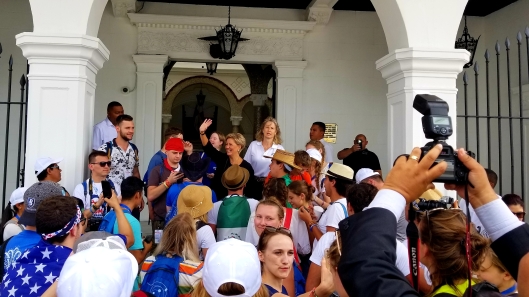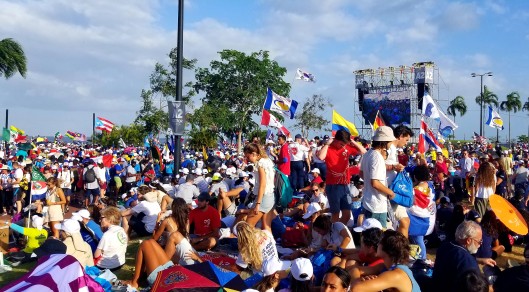Tags
Nativity of our Lord Jesus Christ Catholic Church, Indianapolis
Exodus 12.1-8, 11-14, Psalm 116, 1 Corinthians 11.23-26, John 13.1-15
Source and summit. Those two words were used by the fathers of the Second Vatican Council to describe the Liturgy, the public prayer and worship of the people of God. Source and summit. The liturgy, the Council said, is the “summit toward which the activity of the Church is directed,” and it is the source, or the “fount from which all her power flows” (Sacrosanctum Concilium 10). And within the liturgical life of the Church, the Eucharist is at the center – the regular, weekly, even daily celebration of the Paschal Mystery of Jesus Christ, through which we are fed, and from which we are sent forth to spread the Good News. If all we do as a Church is celebrate the Eucharist, and celebrate it well – then we are doing the most important thing that we can do here on this earth. But if all we do as a Church is celebrate the Eucharist, and nothing else – then we have failed to really embrace the call and the mission that we receive here from Word and Sacrament. The liturgy – especially the Eucharist – is the summit of our lives, as individual disciples, as a parish, as a universal Church. It is the most important thing we do. But it is also the source of our activity, the source of our service, the source of our ministry. And it must be both – source and summit.
We see this especially tonight, on the anniversary of the day when the Eucharist was instituted. This is a liturgy like none other – tonight, we sing and we pray and we worship well. But we also hear the call to serve, to wash feet, to imitate our Lord in humble service. Tonight, we bring our Lenten alms to the altar, the fruit of our sacrifices to give to the poor. And tonight, only on this one night in all the year, the Eucharist leaves the Church: the real presence of Jesus in the Eucharistic bread is taken in solemn procession out of this space – to remind us that the summit of divine transcendence and grace that we encounter on this altar must move us away from here, to become the source of our love for everyone we will meet away from this altar. We meet Jesus here, so that we can take him there; we recognize Jesus here, in the breaking of the bread, so that we can recognize him there, in the poor and alone, in the sick and in those who mourn, in the friend and in the outcast, in the hungry and the well-fed. Source and summit, for the life and redemption of the world.
Some pages after speaking of the Eucharist as Source and Summit, the Second Vatican Council’s document on the liturgy urges that the faithful who are present for the Eucharistic celebration should not be there as “strangers or silent spectators” (Sacrosanctum Concilium 48). The call here is for an active participation in the liturgy. But it is striking to me the language that is used – we are not to be here as strangers. It was with his closest friends, the chosen twelve, that Jesus celebrated the first Eucharist. There were no strangers in that upper room – even the one who would betray Jesus was there first as a friend. So it was for the Israelites, at the Passover – they shared in the meal, each household together, with the closest of family. So it is to be at the Eucharist. There should be no strangers here. We are not to be strangers to each other. We are not to be strangers to those in need. We are not to be strangers to the Lord. Here, we are friends of God. Here, we are friends to one another. Here we break bread and wash feet and share our resources and lift up our hearts in prayer and sing with one voice and implore our God for mercy on us and on the whole world. Here, we are strangers no longer, but citizens with the saints and members of the household of God. Here, at the source and summit of our lives of faith.
This, then, is our Passover feast – this is our heavenly banquet on earth – this Eucharist is our food for the journey, strength for the weary, hope for the hopeless, joy for those who mourn. It is the high point – the peak – the summit of all we are and all we do. And it is the source, the fount, of our love and our service. Because here, we meet Jesus – and he takes us with him to the cross, to the tomb, and to the world.






 This afternoon, our pilgrimage group arrived safely in Panama City for World Youth Day 2019. Also on our plane were pilgrims from Minneapolis/St. Paul, Minnesota, and Eau Claire, Wisconsin, and we encountered many other groups of pilgrims as soon as we set foot in Panama. It is a busy and energetic city this week, and the streets and sidewalks are already filling up with young Catholics from around the world.
This afternoon, our pilgrimage group arrived safely in Panama City for World Youth Day 2019. Also on our plane were pilgrims from Minneapolis/St. Paul, Minnesota, and Eau Claire, Wisconsin, and we encountered many other groups of pilgrims as soon as we set foot in Panama. It is a busy and energetic city this week, and the streets and sidewalks are already filling up with young Catholics from around the world.